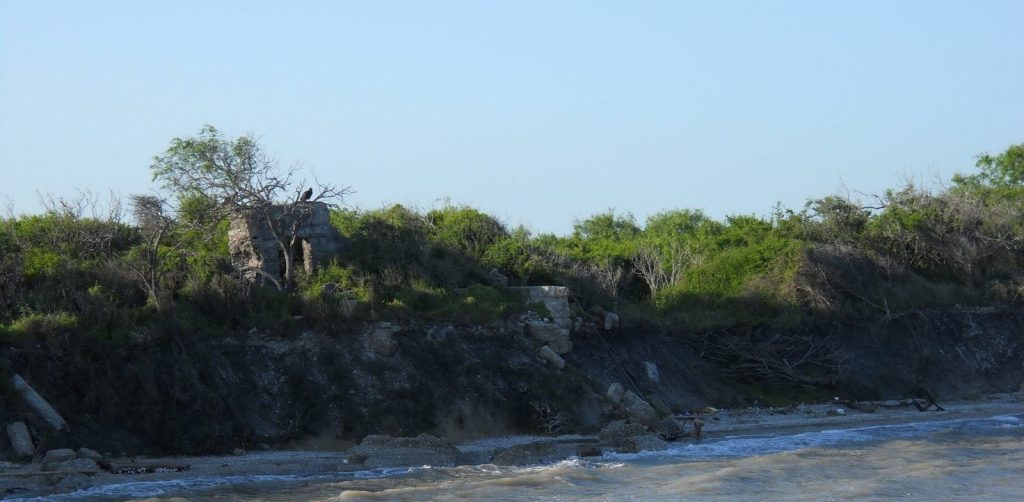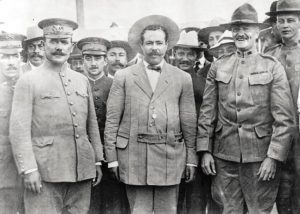The Great Panic of 1819 struck and the Moses Austin’s Bank of St. Louis was forced to close. Due to the economic difficulties of the time and in attempt to maintain their familial wealth, Moses Austin traveled to Texas, having heard of the plentiful land available there by way of massive Spanish land grants. Moses was successful in his endeavor to barter for land with the Spanish, but in 1821, Moses Austin, recipient of propitious Spanish land grants, passed away at his home in Herculaneum, Missouri. Moses Austin’s son, Stephen F. Austin, today also known as “The Father of Texas,” inherited his colonization rights and began settling lands in Spanish Texas.
But this is not the story of the Austin family. Instead, this is the beginning of a story not often told. This is the story of the Irish Impresarios of Spanish and Mexican Texas, who also came in search of fortune, and found much of what they desired, but only after a coarse journey over the rugged Texian terrain. The Irish, little to their knowledge, were to encounter a pioneer’s journey of blood, sweat, and tears. This is the story of Refugio County, Texas.
Sometime in the early 1800’s, two Irishmen, James Hewetson and James Power, migrated to the United States. Both men landed in Philadelphia, but there is no evidence that the two ever met at this time. In fact, shortly after arriving, both men went their separate ways: Hewetson journeyed to St. Louis, Missouri, and Power departed to New Orleans.1

During Hewetson’s time in St. Louis, he made acquaintance with Stephen F. Austin, and the two traveled to Louisiana together where Hewetson embarked in a commercial mining venture in Saltillo, Mexico. Hewetson also spent time with Austin in the Bexar municipality, where Austin began touring the Texas terrain for settlement.2
While in Saltillo, Hewetson encountered James Power for the first time and the men became acquainted. The two became interested in a joint venture as empresarios to Mexican land grants at that time, and became involved with the Mission municipality of Nuestra Senora del Refugio. The mission, established by the Spanish, was the last mission in Texas established on the southern frontier. The Irishmen, James Power and James Hewetson, however, were not permitted to establish settlement on the mission grounds.
Power and Hewetson were required to settle 200 Catholic families within six years, in addition to communicating with the Mexican government in Spanish, the official language of Mexico. Half of all families were required to be of Hispanic heritage, the other half were required to be from Ireland. All of these requirements were written and signed into agreement on penalty of the settler’s loss of their rights to the land beginning on July 11, 1828.3
The Power and Hewetson colony declared its capital the site of Nuestra Senora del Refugio in April of 1830, and began to settle families shortly thereafter. The two empresarios, however, faced extensive difficulties, in the meantime. The Refugio settlement was contested both by the McMullen & McGloin settlement in San Patricio as well as the De Leon settlement, with the charge of overlapping boundaries. In 1833, the jefe politico at Bexar dismissed the contest, and Refugio was at last permitted to begin colonizing. The problem, however, was that nearly five years had already passed out of the six-year expiration period of the land grant. This left colonists apprehensive about the fate of their settlement.4
- Graham Davis, Land! : Irish Pioneers in Mexican and Revolutionary Texas, vol. 1st ed, Centennial Series of the Association of Former Students, Texas A&M University (College Station, Tex: Texas A&M University Press, 2002), 73-74. ↵
- Graham Davis, Land! : Irish Pioneers in Mexican and Revolutionary Texas, 73-74; Stephen F. Austin, Translation of the Laws, Orders, and Contracts, on Colonization, from January, 1821, up to This Time, in Virtue of Which Col. Stephen F. Austin, Has Introduced and Settled Foreign Emigrants in Texas, with an Explanatory Introduction (San Filipe de Austin, Texas: Adam Matthew Digital, 1829), http://www.americanwest.amdigital.co.uk/Documents/Details/Graff_118. ↵
- Graham Davis, Land! : Irish Pioneers in Mexican and Revolutionary Texas, 78-79. ↵
- Graham Davis, Land! : Irish Pioneers in Mexican and Revolutionary Texas, 80-82. ↵



16 comments
Matthew Swaykus
I would love to know why in all my years of required readings of Texan history I have never heard of this story. It Astonishes me that these men tried so hard to settle in this land, on the other side of the world from the Irish homeland. On top of this, they were tasked with insuring unity within their colony despite the fact that exactly half of the families would have different cultural and ethnic backgrounds. We all know how the Irish like to fight when we start drinking, what a daunting task!
Marlene Lozano
Growing up living in Texas I had never heard this story before, so it was interesting to find out that Austin and Hewetson crossed paths at a point in time. I was surprised to find out that Irishman had settled here and was required to bring Catholics to the land. It just goes to show that even back then the cities were diverse.
Caroline Bush
Interesting article! I never knew this story before reading this article so it was really interesting to read about. I never knew that their were Irishmen in the early Spanish-Mexican Texas so it was interesting to learn a little bit of history. I thought it was interesting how they were required two background checks of people before they could inhabit the land. I also thought it was interesting how they had to bring Catholic’s to the land. Overall I really enjoyed the article and found the topic to be very interesting.
Suvesh Vasal
I was unaware of this story as a whole. But I was also unaware that there were Irishman in early Texas. It is interesting that they were required to bring Catholics on the land. I’m not surprised considering most of Mexico was Catholic. Also, the fact that these people had to communicate in Spanish with the Mexican government is very odd. Very interesting article on an unknown topic.
Aaiyanna Johnson
I had never heard of this story before I really, really enjoyed it, and the format of which it was set in. I did not know there were any Irishmen in early Spanish-Mexican Texas. It is weird how they required two backgrounds of the people to live on the land beforehand. It mind-boggling to me of how they only had one year left to fill the land with the required inhabitants.
Alyssa Vela
Great article! Just as our fellow classmates, I too was intrigued that I am from Texas, and still was oblivious to this topic. This event had been overshadowed by so many others during that time, and I think it’s great that you finally put it in the spotlight. It was very well written, and engaging for the reader. I look forward to reading your work in the near future!
Nataly Solis Chavez
Having recently moved from Phoenix, Arizona to Austin, Texas reading through your article it was both interesting and helpful, now I’ll know some background information as to how the city came about. However, what surprised me more than anything was how to live on the land there was a certain criteria that had to be met. You presented a very well written article with valuable information, nicely done.
Jennifer Pogue
Awesome article! Interestingly enough, I am a descendant of James Power. I grew up in this area and I have heard parts of this story before, but never the full thing. I appreciate you writing a story about the Irish. In textbooks I rarely come across anything about Irish-American history. Great article and very well written. I can’t wait to read part two!
Cameron Mays
It’s funny that after all the history courses I’ve taken over the years I’ve never heard about this specific event. It’s overshadowed by other things that took place in the similar time period and I enjoyed how you noted that as well. That’s the biggest compliment I can give: you wrote a compelling and interesting article over something not talked about enough. Good job.
Erik Rodriguez
Great article! I never knew about the Refugio settlement. I love learning more about the area I am from. I truly enjoyed how you wrote about the Irish because I do not come across many articles about them.
Very well written article!